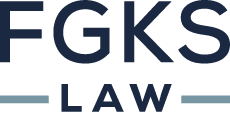Secure Act 2.0
More changes are coming to retirement accounts. Following the passage of the original Setting Every Community Up for Retirement Enhancement (“Secure”) Act of 2019, Congress enacted the Secure Act 2.0 earlier this year. This new law has various changes that will directly impact individual retirement accounts (“IRAs”) and 401(k) plans. Some of those major changes include:
Mandatory Automatic Enrollment
For new 401(k) plans established after December 31, 2024, employers must automatically enroll employees in the plan if they are eligible. For impacted businesses, eligible employee contribution rates must automatically be set at 3% of salary at a minimum by default. This default rate increases annually by 1%, until the eligible employee contribution rate reaches at least 10%. While employees are required to be automatically enrolled, they can always elect to opt out.
Existing 401(k) plans are grandfathered in and are not subject to these new automatic enrollment rules, as well as some other exceptions for small businesses with 10 or fewer employees.
Catch-Up Contributions
Under current law, anyone 50 years of age or older can make a “catch-up contribution” to 401(k) plans and IRAs (the current catch-up contribution is $7,500 for those 50 and older to 401(k) plans, and $1,000 to IRAs). The Secure Act 2.0 now allows for an even higher catch-up contribution to 401(k) plans for those aged 60-63, starting in 2025. This increased catch-up contribution limit for those 60-63 is $10,000 and will be indexed annually to inflation. For IRAs, the catch-up contribution amount will remain at $1,000, but will be indexed for inflation starting in 2024.
Also, for those who earn more than $145,000, these catch-up contributions now have a little less flexibility. Previously, an eligible employee could make a catch-up contribution to either a traditional (pre-tax) or Roth (after-tax) 401(k) account. Starting in 2024, if you earn more than $145,000, all catch-up contributions can only be made to a Roth account. As a result, employers with participants who have wages that exceed $145,000 must ensure that their 401(k) plan permits Roth catch-up contributions.
Required Minimum Distributions
The Secure Act of 2019 set the age at 72, for when the owners of 401(k) and IRA plans had to start taking required minimum distributions (“RMDs”). RMDs applied to all 401(k) and IRA plans, except for Roth IRAs. Starting as of January 1, 2023, this age for RMDs was increased to 73, so individuals have an extra year before they have to start taking distributions. Looking further into the future, the Secure Act 2.0 also pushes the RMD age to 75 starting in 2033.
Unlike Roth IRAs which have been exempt from the RMD rules, Roth 401(k) plan owners have been required to take annual RMDs under prior law. This distinction is being eliminated with the Secure Act 2.0. Starting in 2024, RMDs are eliminated for Roth 401(k) plans, so will have similar treatment to Roth IRAs.
Final Comments
The above items are just a small summary of the numerous changes made by the Secure Act 2.0. Many additional changes were made including new simplified “starter 401(k)” plans for business without an existing retirement plan, new employee emergency savings accounts, and various other changes to employee 401(k) plans and IRAs. The Secure Act 2.0 provides new ways to provide employees with ways to save for retirement, so contact your FGKS Law attorney to learn how any of these changes may apply to your business or employees.
For more information about FGKS Law attorneys and practice areas, please visit www.fgks-law.com.





